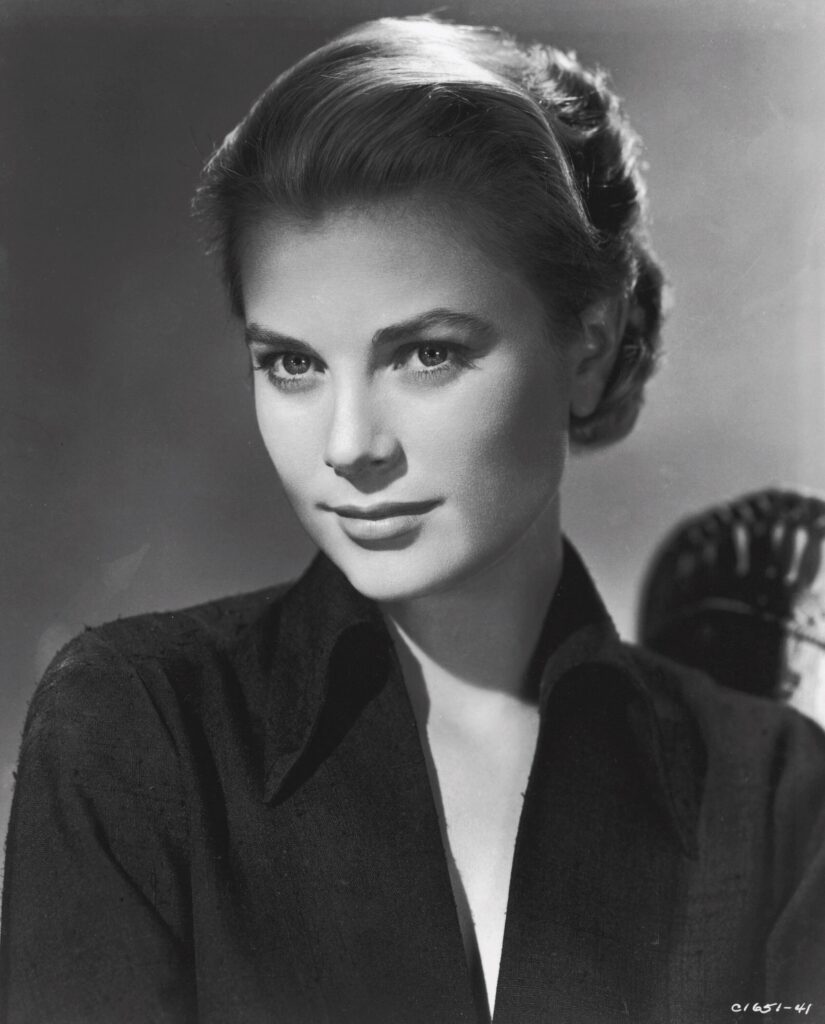
Princess Grace of Monaco
A few weeks ago, I watched Nicole Kidman in Grace of Monaco. At the outset, Grace Kelly, so cool on screen, was hot with misery and insecure in her new role. The audience has the fun of watching her transformation, as she summons the sort of elegance one expects from a princess.
I had always attributed Kelly’s elegance to her beauty, the classical sort that feels more like art than invitation. Lucky, I thought, that Kidman has the same looks. But then I watched Fur: An Imaginary Portrait of Diane Arbus, and true to that role, Kidman was eager, appealing, quirky—and devoid of elegance.
So is most of the contemporary world.
“It’s gone, isn’t it?” fashion designer Bruce Oldfield asks with a sigh. “We’ve sort of lost it. I don’t know why it’s happened, but in a way it’s become an age thing.” He lists a handful of women in their fifties and sixties (among them Kelly’s daughter, Princess Caroline) who remain elegant, but says he cannot find the same effortless, natural style in anyone younger. “It’s the sense of underlying polish that’s often missing.”
If you have ever polished silver, you know that a soft, perfect shine requires elbow grease. Polish comes from knowing the dimensions of every situation, refining impulse, attending to detail. I look at midcentury photos—the women in gloves and hats, the men in suits—and realize that dressing took a certain amount of discipline then, both mental and physical. The body had to be contained and structured, and a lot of small separate pieces had to be integrated into the whole. The result, at its best, was a formal simplicity that looked serene. Elegance, in other words, came from a combination of care taken and urges restrained.
Paging through the ads and fashion spreads of recent Vanity Fair issues, I see shimmery hot pink, flounces, decorative unusable zippers, layers in competing patterns—so much that is “extra,” and all of it worn with an imperative: Look at me! Most contemporary fashion has too much abandon and excess to be elegant. Instead, it is merely on trend, and the trends are bossier, and change faster, because they can be communicated instantly and repeatedly all over the world. And then, with new images and a few keystrokes, a new one arrives.
“Elegance” takes a little time. The word is rooted in the Latin eligio, which means picking out, selecting, editing. Merriam-Webster defines elegance as “refined grace or dignified propriety”; referring to décor or cultural expresion, it is a “restrained beauty of style.” Dignity demands a certain posture—even your muscles must make an effort—and restraint is an art we have almost forgotten. But those qualities make sense of the next definition: “scientific precision, neatness, and simplicity.”
Imagine advising someone in their twenties to dress with precision, neatness, and simplicity. They would gag. It sounds prim and dull, as does “modesty.” But look at Audrey Hepburn in black gloves and dress, and you see a different possibility.
In math, an elegant equation is startlingly simple and therefore beautiful. Alain de Botton writes of elegance as “a quality present whenever a work of architecture succeeds in carrying out an act of resistance—holding, spanning, sheltering—with grace and economy as well as strength; when it has the modesty not to draw attention to the difficulties it has surmounted.”
Anything we do can be elegant, if it is done carefully and simply, with an understanding of unity, symmetry, balance, and proportion. Elegance is simple, calm, immaculate, and grown-up, never overreacting or trying too hard.
Antoine de Saint-Exupéry, author of The Little Prince, was also an aircraft designer, and his definition of elegance was not that there was nothing left to add, but that there was nothing left to subtract. Hence Coco Chanel’s advice to look in the hallway mirror as they left the house, then remove one accessory. Hence Occam’s Razor—medieval advice, followed by scientists for centuries, to prefer the simplest solution.
Occam no longer applies, I read recently. George Church, a geneticist and molecular engineer at Harvard University, jokes that “Occam now uses a Web-enabled fractal e-razor.” Science has moved on from classical physics, and elegance now resides in complexity.
Maybe the rest of us somehow ingested that scientific shift. Or maybe our world is too loud and distracting to have confidence in quiet modesty. In its confusion, we are afraid to subtract anything, because we are no longer sure what is essential, what is timeless, what works. We eat food loaded with additives and buy devices and cars and computers that can do a thousand things we do not need done. Like our closets, our minds are glommed up with stuff, most of it shoddy. We allow experts to urge convoluted ideas and politicians to oversimplify—a process that is entirely different than simplicity, and falsifies it. Eager to shuck rules and expectations, we are inelegant, even vulgar, and gleeful in our excess.
Read more by Jeannette Cooperman here.
